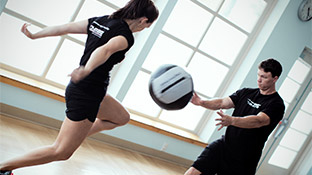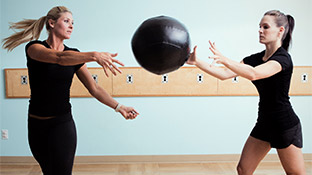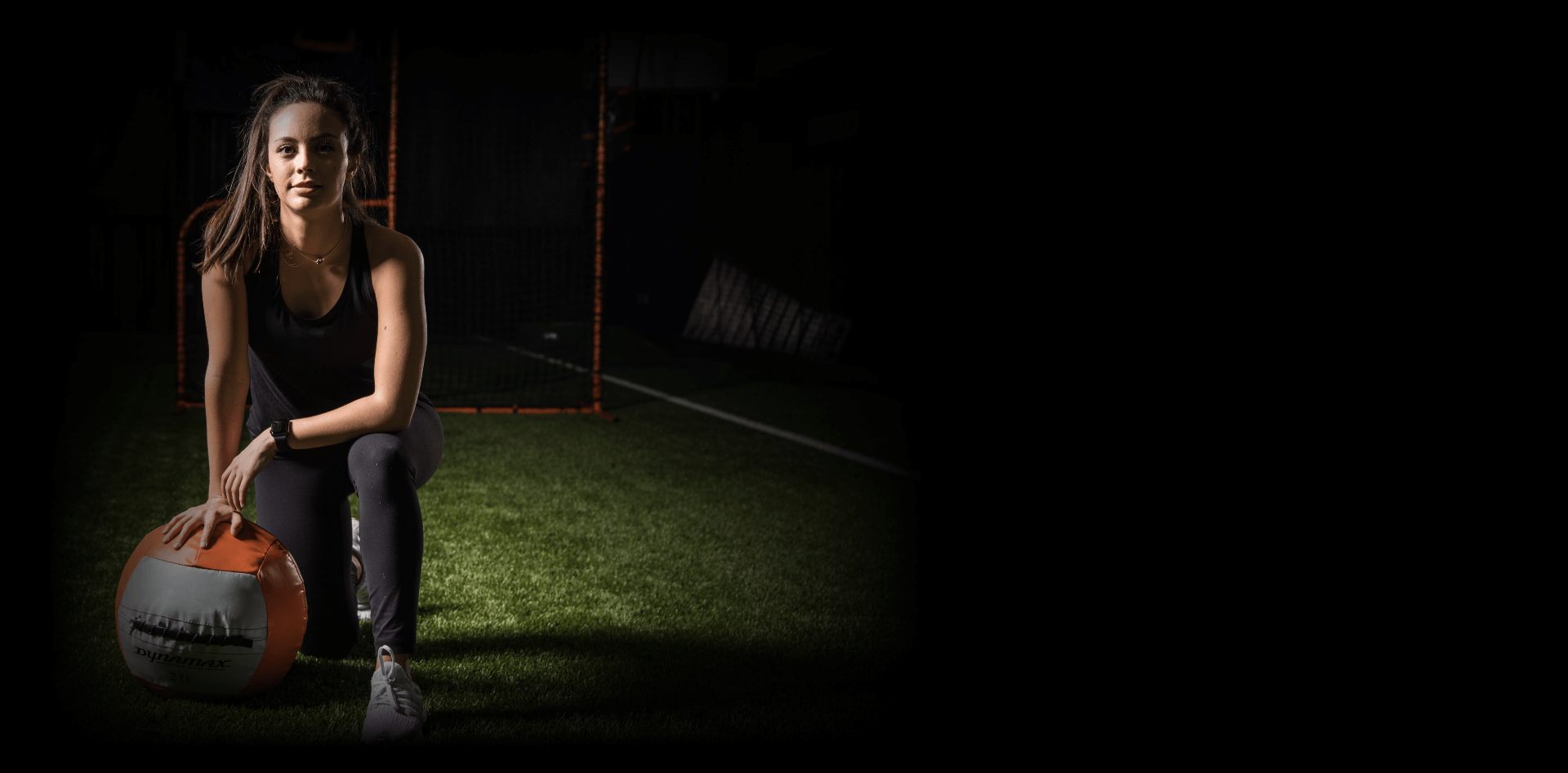Medicine Ball Training Basics

The value of movement-based training
Besides the obvious advantages from a physiologic, practical, and enjoyment standpoint, movement-based training is also adaptable. The exercises provided in our education section are simply the basics. Nearly every exercise may be combined with another movement into a seamless transition of exercises without a break. This is important for two reasons: First, in life, we do not move like robots – we move with rhythm, cadence, and coordination; and second, there is an infinite number of exercise combinations and variations possible with this form of training.
If you are accustomed to typical stand-and-pitch medicine ball training you have been missing the value of this training tool by diluting the medicine ball into a glorified weight lifting exercise. Movement based training allows for the development of specific exercises. Most trainers will begin with the basic exercises we have provided and develop their own variations specific to their individual or client needs. This is the beauty of Dynamax medicine ball training!

Basic partner set-up
When performing exercises with the Dynamax ball the general rule for partner set-up is to maintain a space equal to arms length and the diameter of the ball. Execute each exercise with maximum velocity to ensure the greatest training effect.
Caution
Do not attempt these exercises with a hard rubber weighted ball that is just labeled “medicine ball“. Your equipment must be able to absorb impact on contact with your training partner, wall or other object. The Dynamax Leather Medicine Ball is designed for these exercises.

Frequently Asked Questions
Equipment Selection – When does a ball become a medicine ball?
Many people assume that the weight of a medicine ball is the most important determining factor, however, the ability of the ball to absorb impact should be your primary assessment tool. A piece of equipment that can be thrown, caught, and struck with maximum force and velocity provides a training tool for life. Think of a medicine ball as an implement that combines the qualities of a ball and the qualities of an impact absorbing mitt into one unit.
Choosing A Weight – How heavy should I go?
Because we equate weight with strength, there is a tendency to think that heavier is better. Not so! The key in medicine ball training is to insure that both speed of a selected movement and resistance to the selected movement are involved in the overload. Just heavy enough to provide resistance but not so heavy as to alter the structure and speed of the selected movement. 4lb , 5lb, and up to 20lb medicine balls can work for participants. Even though the resistance is the same, the velocity will increase with the strength, size and power of the participant. The heavy medicine balls are used where slower, more strength related exercises are featured.
Using a 20lb medicine ball can develop raw strength but it is important to understand that raw strength does not necessarily translate into more speed and power. Remember that the power formula is Power = force ÷ time. When you add an external load to an exercise it is impossible to move at the same velocity as a non-weighted movement. Further, the more weight you add to a movement the greater the variance in biomechanics you will likely see. This is one reason why people might become injured when lifting very high loads in the weight room – they alter their body mechanics to compensate for weaker segments in the body. This is where movement-based medicine ball training shows it’s strength – by training movements as opposed to body segments, it is possible to expose the weak sections of the body and train these areas for optimum performance. Remember: Just because you are training with a lighter ball doesn’t mean you won’t see tremendous improvements in your overall conditioning, coordination, and maximum strength!
Does movement-based partner medicine ball exercises replace traditional weight training?
Absolutely not – they compliment each other. Medicine Ball work is a bridge that incorporates the strength gained from weight training into specific athletic motion. When heavier balls are used for slower, low volume sets, their use is more akin to weight training and equivalent to a glorified dumbbell exercise. When lighter balls are used for high volume/high velocity sets, the intent is for quality, speed, power, and endurance of specific movement patterns. It is important to incorporate movement-based medicine ball training into a well rounded program that focuses on strength training, plyometrics, core strength, and overall cardiovascular fitness, along with other components specific to your training requirements. We believe that movement-based partner medicine ball training provides superior training results to other, more basic forms of medicine ball training.
Do I always need a partner?
Training with a partner, coach, or personal trainer is most effective, just as it is in the weight room when you have a spotter. The partner insures the frequency, speed, quality, and accuracy of each repetition. It’s also a lot of fun! Solo/individual workouts can be done but the first choice should be with a partner.